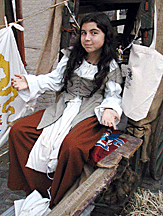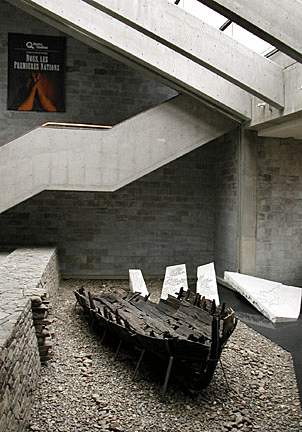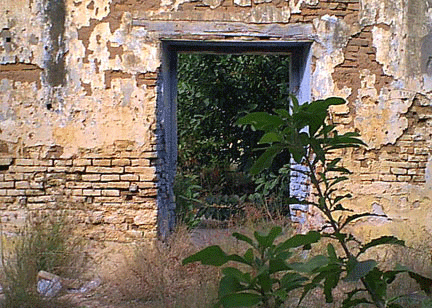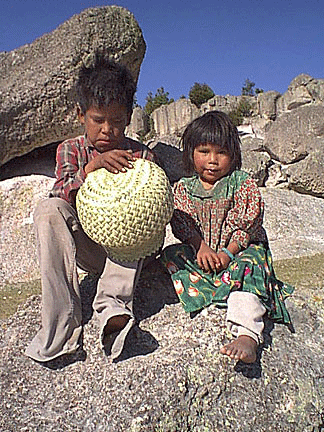
TAKING
DIGITAL TRAVEL PHOTOS
 Good
travel photographs come from good trips and good trips come from good
planning. Rule No. 1: Don't buy a new digital camera just before going on your trip.
Be sure to test and be familiar with it before leaving.
Good
travel photographs come from good trips and good trips come from good
planning. Rule No. 1: Don't buy a new digital camera just before going on your trip.
Be sure to test and be familiar with it before leaving.
And don't only look for the obvious―the panoramas, the strange
clothes, all the things that are different from back home. Have an eye
for the details. Remember that youíll show your pictures to friends on
your return, so try and give them the atmosphere and feel of the place.
This is sometimes better done with a general photo plus three or so
detail shots.
Itís better if you travel with a positive interest in something,
rather than a "today's Wednesday, must be Mexico" attitude.
Carry your camera with you at all times. The small size of most digital
cameras make them ideal for this. This way you wonít miss a shot.
Donít photograph military installations. And since 911, airports
are also off limits to photographers. With the tight security around the
world, itís important to ask before you shoot.

Respect other people's cultures. Never intrude into places of prayer
or private areas. Ask permission to take pictures but be prepared to
sneak a shot if the answer is no. Be discreet and always polite so you
don't foul it up for another photographer later on. One advantage to
using a digital camera is the relative ease and quiet of its operation,
especially with the simpler point-and-shoot models.
 Professional photographers clean their cameras every day, immediately
after returning to base. At the same time they write captions for their
photographs while their memory is fresh. Carry a small notebook and make
notes about the photographs you take as soon after you take them as
possible. If possible, plan your next day's shooting.
Professional photographers clean their cameras every day, immediately
after returning to base. At the same time they write captions for their
photographs while their memory is fresh. Carry a small notebook and make
notes about the photographs you take as soon after you take them as
possible. If possible, plan your next day's shooting.
For
many people, travel is an experience, shared with the family. When
carrying assorted hand baggage, cameras are often incidentals. Another
advantage of digital cameras is that moderately priced models come with
a zoom lens, so extra lenses are unnecessary. Also, many digital cameras
fit into small pouches that can be slipped on a belt or carried in a
purse.
Read or watch videos about your destination before departing. One of the best
sources are Time-Life books, which contain both text and photographs of
various locations. And donít forget to search for
travel videos online. A knowledge of local customs,
main features and interesting events is helpful and will enhance your
first impressions.
 Try not to travel with a group, as photography is a single minded
pursuit and unsympathetic people will affect the concentration needed to
take good pictures. If you have to travel with a group, study the
itinerary before booking your trip to make sure it allows sufficient
time to go off on your own occasionally to take pictures. Be sure to be
considerate of your fellow travelers and try not to make them wait too
many times.
Try not to travel with a group, as photography is a single minded
pursuit and unsympathetic people will affect the concentration needed to
take good pictures. If you have to travel with a group, study the
itinerary before booking your trip to make sure it allows sufficient
time to go off on your own occasionally to take pictures. Be sure to be
considerate of your fellow travelers and try not to make them wait too
many times.
Donít cover too many places in one day or overshoot on the first
day in a new place. Thereís a tendency to do this due to your
excitement at being in a new culture. By overshooting early on itís
also possible to fill your digital media cards. Just when youíre
beginning to get the feeling of a place, you may find that you could
have put the space on your media cards to better use. On that note, itís
a good idea to purchase extra storage media cards before your trip so
that you donít have to lug a laptop along.
 Itís often best to choose a location and wait for the action to
come to you. Stand back and observe before shooting a number of shots.
By observing the scene around you, youíll see details that you might
have missed otherwise. People going about their daily business also make
interesting shots.
Itís often best to choose a location and wait for the action to
come to you. Stand back and observe before shooting a number of shots.
By observing the scene around you, youíll see details that you might
have missed otherwise. People going about their daily business also make
interesting shots.
When visiting a foreign town, buy postcards of the places of
interest. If the visit is short, the cards will save you time by
enabling you to select a sight and, if thereís a language barrier, you
can show them to cab drivers. Once at the sight, look for the camera
angle the professional postcard photographer had chosen and try to
produce a better shot. Then walk around and photograph the location from
different angles. Note the position of the sun and calculate the time
when the light might be better. If necessary return to the spot for a
better shot.
Donít be put off by unfavorable weather conditions. Itís possible
youíll get a unique picture of a place that has been photographed a
million times before. Also, find out if there are any special events
taking place while youíre in town.

